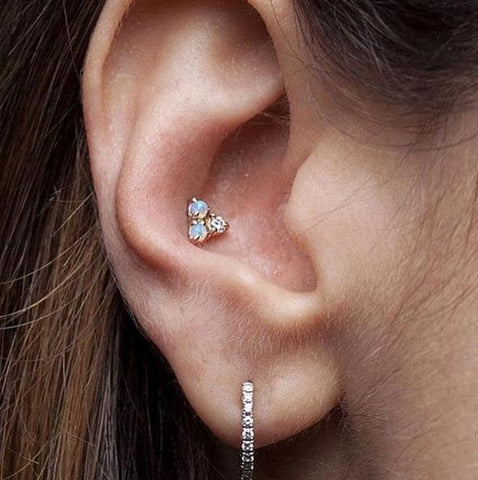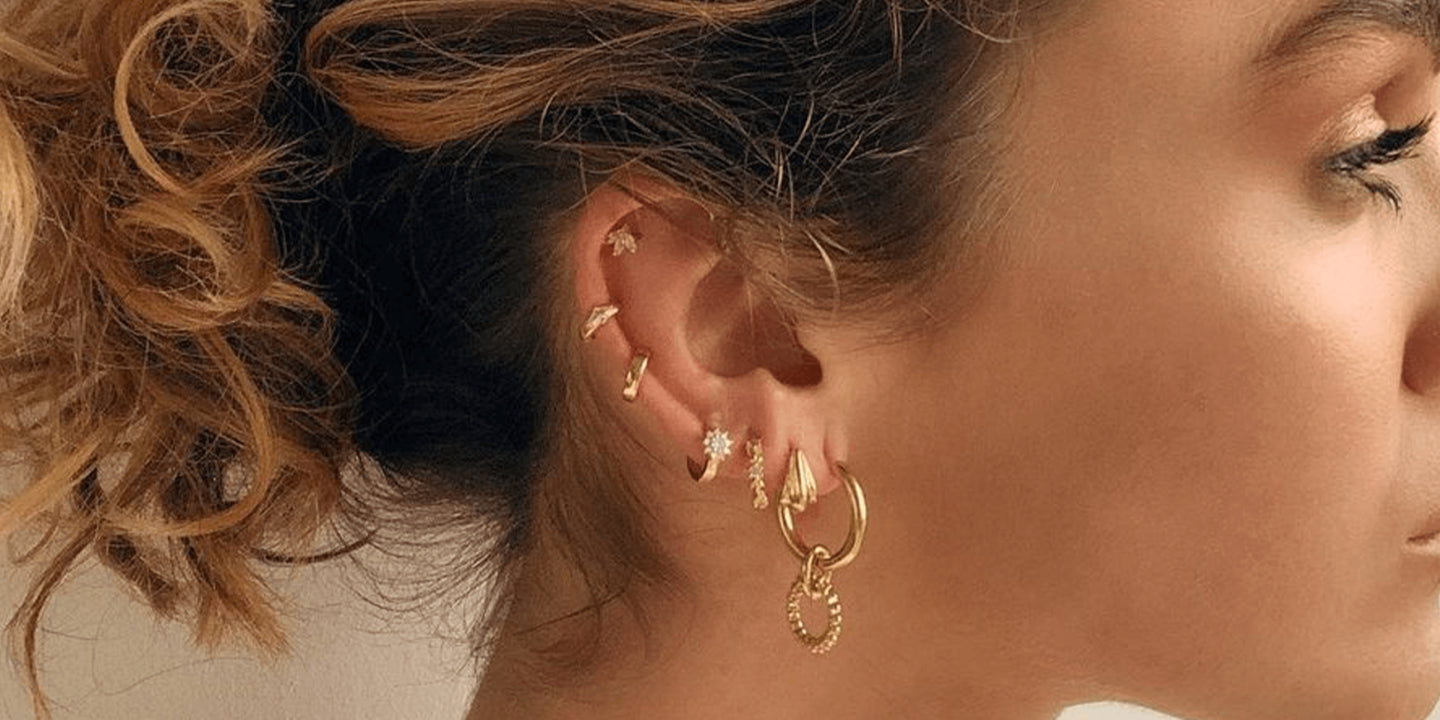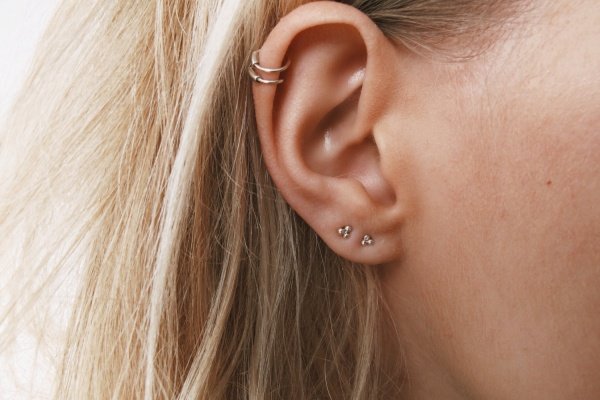A conch piercing is a stylish and unique way to adorn your ear cartilage. However, it also requires proper preparation, procedure, care, and patience to ensure a successful outcome. Before getting a conch piercing, you should do some research and consult with a professional piercer. You should also follow some aftercare tips and watch out for any signs of complications. With proper care and attention, you can enjoy your conch piercing for a long time.
If you are looking for some high-quality and affordable jewelry for your conch piercing, you can check out RebelBod.com . RebelBod.com have a wide range of jewelry types, sizes, colors, and designs to suit your preference and style. Some examples of products that are suitable for conch piercings are:
-
14K Gold Seamless Ring Hoop: This is a simple and elegant hoop that can fit snugly in your inner or outer conch. It is made of 14k gold, which is hypoallergenic and durable. It comes in different gauges (thicknesses) and diameters to suit your piercing size.
-
14K Gold Labret with Ball: This is a classic stud that can add some sparkle to your inner or outer conch. It is made of 14k gold, which is hypoallergenic and durable. It has a ball on one end and a flat back on the other for comfort and security. It comes in different gauges (thicknesses) and lengths to suit your piercing size.
-
Titanium Internally Threaded Labret with Prong Set Opal: This is a stunning stud that can add some color and shine to your inner or outer conch. It is made of titanium, which is hypoallergenic, lightweight, and corrosion-resistant. It has an opal gemstone on one end and an internally threaded flat back on the other for easy insertion and removal. It comes in different gauges (thicknesses), lengths, and opal colors to suit your piercing size and style.
-
Titanium Hinged Segment Ring Hoop: This is a sleek and smooth hoop that can wrap around your inner or outer conch. It is made of titanium, which is hypoallergenic, lightweight, and corrosion-resistant. It has a hinged segment that allows you to open and close the ring easily. It comes in different gauges (thicknesses) and diameters to suit your piercing size.
-
Titanium Curved Barbell with Balls: This is a versatile barbell that can go through both your inner and outer conch. It is made of titanium, which is hypoallergenic, lightweight, and corrosion-resistant. It has balls on both ends that can be unscrewed for changing or cleaning. It comes in different gauges (thicknesses), lengths, and ball sizes to suit your piercing size.
-
Titanium Captive Bead Ring with Ball: This is a classic ring that can fit in your inner or outer conch. It is made of titanium, which is hypoallergenic, lightweight, and corrosion-resistant. It has a ball that holds the ring in place and can be removed for changing or cleaning. It comes in different gauges (thicknesses) and diameters to suit your piercing size.
RebelBod.com have a wide range of jewelry types, sizes, colors, and designs to suit your preference and style. You can browse the collection of conch earrings here: https://rebelbod.com/collections/conch-earrings
You can also find more information on body piercing types here: https://rebelbod.com/collections/body-piercing-types
And more information on body jewelry types here: https://rebelbod.com/collections/body-jewelry-type
If you are looking for high-quality, affordable, and stylish jewelry for your piercing, you should check out RebelBod.com. RebelBod.com is an online store that specializes in body jewelry for all types of piercings. RebelBod.com have a wide range of jewelry types, sizes, materials, colors, and designs for your lobe piercing. Whether you want simple studs, fun hoops, cool rings, sleek barbells, bold plugs, or trendy tunnels, RebelBod.com has it all.
RebelBod.com offers jewelry that is made of hypoallergenic, non-porous, smooth, and easy to clean materials, such as titanium, surgical steel, gold, and glass. RebelBod.com also have jewelry that is made of acrylic, wood, stone, and silicone for healed piercing. RebelBod.com have jewelry that suits your skin tone, hair color, eye color, or outfit and jewelry that complements your personality and preferences.
RebelBod.com is your one-stop shop for all your body piercing jewelry needs. Visit RebelBod.com today and browse the amazing collection of jewelry for your body piercing!




